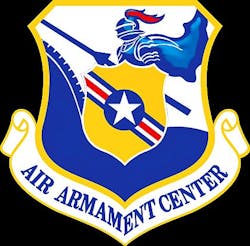Air Force bunker-busting bomb program moves forward with concept-development contract to Boeing
EGLIN AIR FORCE BASE, Fla., 16 Aug. 2012. Air-launched weapons experts at the Boeing Co. Defense, Space & Security segment in St. Louis will help the U.S. Air Force design a rocket-propelled bomb for the F-35 Lightning II stealth fighter-bomber that can attack and destroy enemy bunkers, tunnel complexes, and other important deeply buried targets.
Boeing won a $1.4 million contract, announced earlier this month, for concept development of the High Velocity Penetrating Weapon (HVPW) program, which aims at developing a 2,000-pound bunker-busting munition with solid-rocket propulsion that will give the weapon the power of a 5,000-pound gravity bomb.
Awarding the contract to Boeing were officials of the Air Force Air Armament Center at Eglin Air Force Base, Fla. Boeing also is working on a separate bunker-busting munitions program called the Massive Ordnance Penetrator (MOP).
The High Velocity Penetrating Weapon program is a long-term initiative to develop munitions capable of reaching and destroying high-value targets buried deeply in the Earth, or protected by concrete and reinforced steel.
Boeing joins a list of defense contractors working on this weapons program. The Air Force previously has awarded High Velocity Penetrating Weapon Flagship Capability Concept (HVPW FCC) research contracts to Lockheed Martin Corp. in Bethesda, Md.; MBDA Missile Systems in Paris; and Raytheon Co. in Waltham, Mass.
Raytheon's Space and Airborne Systems segment in El Segundo, Calif., won a contract last January to design and demonstrate navigation and guidance technologies to keep future generations of deep-penetrating bombs and missiles on target in conditions where signals from Global Positioning System (GPS) satellite satellites are degraded or unavailable.
The contract calls for Raytheon to develop GPS-degraded munitions guidance technology as part of the Air Force High Velocity Penetrating Weapon program, which seeks to develop technologies for a future rocket-boosted bunker-busting bomb for the F-35 and other fighter-bombers.
Awarding the contract to Raytheon were officials of the Air Force Research Laboratory's Munitions Directorate at Eglin Air Force Base. Raytheon engineers will develop guidance to provide maximum penetration for a future High Velocity Penetrating Weapon, with the ability to overcome GPS-degraded environments and direct the deep-penetrating weapon to impact angles sufficient to destroy hard, deeply buried facilities.
Raytheon experts will explore weapons-guidance technologies for anti-jam GPS, angle-of-attack sensing, guidance law and autopilot, and RF seeker and guidance techniques that could support the High Velocity Penetrating Weapon's accuracy.
In October the Air Force Research Laboratory Munitions Directorate (AFRL/RW), Hard and Deeply Buried Targets (HDBT) Capability Area (CA) integrated product team at Eglin Air Force Base will brief industry on the progress and future needs of the HVPW FCC program.
Briefings will cover future needs for bunker-busting munition guidance, navigation and control; propulsion; explosives; and systems integration, as well as the Global Strike Penetrating Munition for Conventional Prompt Global Strike (CPGS) and Functional Defeat program.
For more information contact Boeing Defense, Space & Security online at www.boeing.com/bds, or Eglin Air Force Base at www.eglin.af.mil.
Follow Military & Aerospace Electronics and Avionics Intelligence news updates on Twitter
